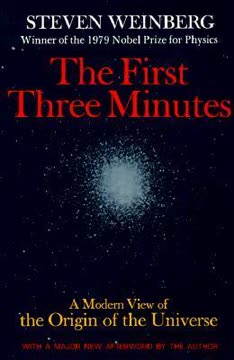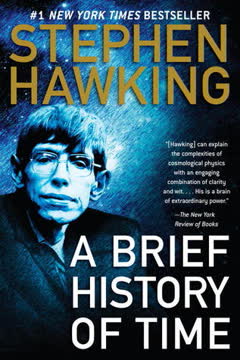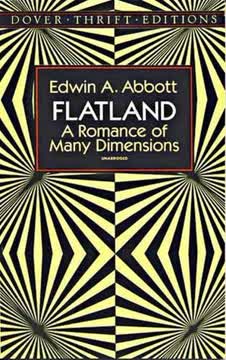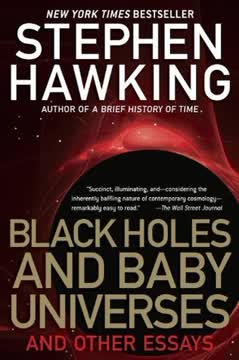Puntos clave
1. La Ciencia de Interstellar: Un Viaje a Través del Espacio, el Tiempo y Hollywood
"No sé una buena manera de dibujarlo, ninguna mejor que la Figura 23.5. Pero tiene consecuencias maravillosas."
Una colaboración única. El libro "La Ciencia de Interstellar" es el resultado de una asociación notable entre el renombrado físico Kip Thorne y cineastas de Hollywood. Explora los conceptos científicos detrás de la película "Interstellar" de Christopher Nolan, fusionando física de vanguardia con narración cinematográfica.
Precisión científica en la ficción. Thorne trabajó estrechamente con los creadores de la película para asegurar la precisión científica mientras permitía la narración creativa. El libro profundiza en la física de los agujeros negros, los agujeros de gusano, la dilatación del tiempo y otros conceptos avanzados, explicando cómo se incorporaron en la narrativa de la película.
Un puente entre la ciencia y el entretenimiento. Esta colaboración demuestra cómo la ciencia puede inspirar y enriquecer la narración, utilizando además los medios populares como un vehículo para educar al público sobre ideas científicas complejas.
2. Agujeros Negros: Espaciotiempo Deformado y Monstruos Gravitacionales
"Los agujeros negros están hechos de espacio deformado y tiempo deformado. Nada más—ninguna materia en absoluto."
Definiendo los agujeros negros. Los agujeros negros son regiones del espacio donde la gravedad es tan fuerte que nada, ni siquiera la luz, puede escapar. No están compuestos de materia, sino que están hechos completamente de espaciotiempo deformado.
Características clave:
- Horizonte de eventos: La frontera más allá de la cual nada puede escapar
- Singularidad: El centro infinitamente denso de un agujero negro
- Dilatación temporal gravitacional: El tiempo fluye más lentamente cerca de un agujero negro
- Lente gravitacional: Los agujeros negros doblan la luz, distorsionando la apariencia de los objetos detrás de ellos
Gargantua en Interstellar. La película presenta un agujero negro supermasivo llamado Gargantua, que juega un papel crucial en la trama. Thorne trabajó con artistas de efectos visuales para crear la representación más científicamente precisa de un agujero negro jamás vista en una película de ficción.
3. Agujeros de Gusano: Atajos a Través del Universo
"Un agujero de gusano no es un fenómeno que ocurra de forma natural."
Construcciones teóricas. Los agujeros de gusano son túneles hipotéticos a través del espaciotiempo que podrían crear atajos para largos viajes a través del universo. Aunque son permitidos por las ecuaciones de Einstein, es probable que sean imposibles de formar de manera natural.
Conceptos clave:
- Puentes de Einstein-Rosen: La descripción matemática de los agujeros de gusano
- Materia exótica: Materia hipotética con densidad de energía negativa, necesaria para mantener los agujeros de gusano abiertos
- Travesabilidad: El potencial de que la materia pase a través de un agujero de gusano
En Interstellar. La película utiliza un agujero de gusano como un recurso narrativo para permitir el viaje interestelar. Thorne explora la base científica de este concepto y los desafíos de visualizar un objeto de cuatro dimensiones en un medio tridimensional.
4. Dilatación Temporal Relativista: Los Efectos Profundos de la Gravedad en el Tiempo
"Todo quiere vivir donde envejece más lentamente, y la gravedad lo atrae allí."
Perspectivas de Einstein. La dilatación temporal es una consecuencia de la teoría de la relatividad de Einstein, que establece que el tiempo fluye más lentamente en campos gravitacionales más fuertes o a velocidades más altas.
Ejemplos del mundo real:
- Satélites GPS: Deben tener en cuenta la dilatación temporal para mantener la precisión
- Relojes atómicos: Pueden medir pequeñas diferencias en el flujo del tiempo a diferentes altitudes
Dilatación extrema del tiempo en Interstellar. La película ilustra dramáticamente este concepto con el planeta de Miller, donde una hora en la superficie equivale a siete años en la Tierra debido a su proximidad al agujero negro supermasivo Gargantua.
5. La Quinta Dimensión: Explorando el Concepto de Bulk
"Para Ellos, el tiempo puede ser solo otra dimensión física. Para Ellos, el pasado podría ser un cañón al que pueden escalar y el futuro una montaña que pueden ascender."
Más allá de nuestro universo observable. El concepto de "bulk" en la película se refiere a un espacio de dimensiones superiores en el que existe nuestro universo tridimensional (o "brana").
Ideas clave:
- Teoría de branas: Sugiere que nuestro universo es una membrana en un espacio de dimensiones superiores
- Teoría de cuerdas: Propone la existencia de dimensiones espaciales adicionales
- Seres de bulk: Entidades hipotéticas que podrían moverse libremente a través de estas dimensiones extra
Implicaciones para la historia. En Interstellar, la idea de bulk y dimensiones superiores se utiliza para explicar hazañas aparentemente imposibles, como manipular la gravedad a través del tiempo y el espacio.
6. Anomalías Gravitacionales y la Búsqueda por "Resolver la Gravedad"
"La tercera ley de Newton. La única forma en que los humanos han descubierto para llegar a algún lugar es dejar algo atrás."
Fenómenos inexplicables. Las anomalías gravitacionales en la película se refieren a efectos gravitacionales inexplicables que no encajan con nuestra comprensión actual de la física.
La ecuación del Profesor:
- Intenta unificar la gravedad con la mecánica cuántica
- Busca explicar y controlar las anomalías gravitacionales
- Representa la frontera de la física teórica
Búsqueda de una teoría del todo. La trama de la película gira en torno al intento de "resolver la gravedad", que en la física real corresponde a la búsqueda continua de una teoría que unifique la relatividad general con la mecánica cuántica.
7. Visualizando lo Imposible: Trayendo Precisión Científica al Cine
"Fue un placer trabajar con ellos."
Visuales innovadores. Thorne colaboró estrechamente con el equipo de efectos visuales para crear representaciones científicamente precisas de agujeros negros, agujeros de gusano y otros fenómenos cósmicos.
Innovaciones:
- Primera representación precisa del disco de acreción de un agujero negro en una película de ficción
- Visualización de los efectos de lente gravitacional alrededor de un agujero negro
- Representación de un tesseracto de cuatro dimensiones en un espacio tridimensional
Equilibrando precisión y narración. Mientras se esforzaban por lograr precisión científica, se hicieron ciertos compromisos por el bien de la narrativa y la claridad visual para la audiencia.
8. El Viaje de la Endurance: Navegando en Física Extrema
"Cooper toma una decisión rápida: 'El sistema de navegación está destruido y no tenemos suficiente soporte vital para regresar a la Tierra. Pero podríamos llegar al planeta de Edmunds.'"
Desafíos de navegación interestelar. La película explora las condiciones extremas y la física involucradas en viajar cerca de un agujero negro supermasivo.
Conceptos clave:
- Gravitational slingshots: Usar la gravedad para acelerar naves espaciales
- Órbita crítica: La órbita inestable en el "borde del volcán" alrededor de un agujero negro
- Dilatación extrema del tiempo: Enfrentando el paso del tiempo drásticamente diferente en varias ubicaciones
Equilibrando realismo y drama. La representación del viaje espacial en la película involucra tanto conceptos científicamente precisos como licencias dramáticas para crear una narración cautivadora.
9. Singularidades: Donde la Física Se Descompone
"Una singularidad BKL es caótica. Altamente caótica. Y letal. Altamente letal."
Los límites de la física conocida. Las singularidades representan puntos donde nuestra comprensión actual de la física se descompone, típicamente encontradas en el centro de los agujeros negros.
Tipos de singularidades:
- BKL (Belinsky-Khalatnikov-Lifshitz): Singularidad caótica en el centro de los agujeros negros
- Singularidad de caída: Creada por materia que cae en un agujero negro
- Singularidad de salida: Un tipo de singularidad recién descubierto en agujeros negros en rotación
Gravedad cuántica. Se piensa que el comportamiento de las singularidades está gobernado por las leyes aún no descubiertas de la gravedad cuántica, representando una frontera en la física teórica.
10. Viaje en el Tiempo y Mensajes al Pasado: Empujando los Límites de la Física
"¡Cooper puede moverse mucho más rápido que el flujo del tiempo en las extrusiones del dormitorio, así que puede viajar fácilmente a través del complejo del tesseracto a casi cualquier momento del dormitorio que desee!"
Posibilidades teóricas. Aunque el viaje en el tiempo hacia atrás es probablemente imposible, la película explora conceptos especulativos basados en teorías físicas actuales.
Ideas clave:
- Curvas temporales cerradas: Caminos teóricos a través del espaciotiempo que regresan a su punto de partida en el espacio y el tiempo
- Ondas gravitacionales: Ondas en el espaciotiempo que podrían potencialmente llevar información
- Seres de bulk: Entidades hipotéticas que podrían manipular el tiempo y el espacio desde dimensiones superiores
Narración con fundamento científico. La película utiliza estos conceptos para crear una narrativa que empuja los límites de la física conocida mientras mantiene una conexión con teorías científicas reales y especulaciones.
Última actualización:
FAQ
What's The Science of Interstellar about?
- Exploration of scientific concepts: The book delves into the scientific principles behind the film Interstellar, covering topics like black holes, wormholes, and gravitational waves.
- Collaboration with filmmakers: Kip S. Thorne, a renowned physicist, worked closely with director Christopher Nolan to ensure the film's science was both accurate and engaging.
- Accessible to all readers: Thorne aims to make complex scientific ideas understandable to a general audience, encouraging curiosity about the universe.
Why should I read The Science of Interstellar?
- Unique perspective on science: The book offers insights from a leading physicist who contributed to a major Hollywood film, blending entertainment with education.
- Inspires interest in science: Thorne's passion for science is infectious, motivating readers to explore scientific concepts and their implications for humanity.
- Deepens understanding of the film: Readers gain a richer appreciation of Interstellar by learning the real science behind its plot and visuals.
What are the key takeaways of The Science of Interstellar?
- Understanding black holes: The book explains how black holes are formed, their properties, and their role in the universe, emphasizing their nature as "warped space and warped time."
- Concept of wormholes: Thorne discusses the theoretical existence of wormholes, their potential for interstellar travel, and the need for "exotic matter" to keep them open.
- Impact of gravity on time: The relationship between gravity and time is explored, particularly how "time slows near Gargantua," affecting the characters' experiences in the film.
What are the best quotes from The Science of Interstellar and what do they mean?
- "Accident is the first building block of evolution.": This quote reflects the unpredictability of life and evolution, suggesting that chance events can lead to significant changes in species and environments.
- "A wormhole isn’t a naturally occurring phenomenon.": Thorne emphasizes that traversable wormholes, if they exist, are likely artificial constructs rather than naturally occurring entities in the universe.
- "The last people to starve will be the first to suffocate.": This quote highlights the dire consequences of environmental collapse, illustrating the interconnectedness of food supply and breathable air in a deteriorating ecosystem.
How does The Science of Interstellar explain black holes?
- Black holes as warping spacetime: Thorne describes black holes as regions where spacetime is warped so severely that nothing, not even light, can escape their gravitational pull.
- Gargantua's properties: The book details the characteristics of Gargantua, the black hole in Interstellar, including its mass, spin, and the effects of its tidal gravity on nearby objects.
- Visualizing black holes: Thorne discusses how the film visually represents black holes and their accretion disks, using scientific principles to create a realistic portrayal.
What scientific principles are explained in The Science of Interstellar?
- Black holes and their properties: The book details how black holes warp space and time, affecting nearby objects and light, and discusses their formation from dying stars.
- Wormholes as shortcuts: Thorne explains the concept of wormholes as theoretical passages through space-time that could allow for faster-than-light travel, contingent on the existence of exotic matter.
- Gravitational waves: The text covers the detection of gravitational waves and their significance in understanding cosmic events, such as black hole collisions.
How does The Science of Interstellar address the concept of time?
- Time as a fourth dimension: Thorne emphasizes that time is treated as a fourth dimension in the universe, fundamentally different from the three spatial dimensions we experience.
- Time dilation near black holes: The book explains how time slows down in strong gravitational fields, such as those near black holes, affecting the experiences of characters in the film.
- Interplay of time and gravity: Thorne discusses how gravity influences the flow of time, a key theme in both the film and the scientific principles it explores.
What is the significance of gravitational anomalies in The Science of Interstellar?
- Key to understanding gravity: Gravitational anomalies are presented as phenomena that could provide insights into the fundamental nature of gravity and its effects on space-time.
- Potential for new discoveries: Thorne suggests that studying these anomalies could lead to breakthroughs in our understanding of the universe and the laws of physics.
- Plot device in the film: In Interstellar, these anomalies drive the narrative, influencing the characters' decisions and the quest for survival.
How does The Science of Interstellar explain the role of gravity?
- Gravity as a fundamental force: Thorne emphasizes that gravity is one of the four fundamental forces of nature, governing the interactions of matter and the structure of the universe.
- Gravitational waves: The book discusses the significance of gravitational waves, ripples in spacetime caused by massive objects, and their role in the film's narrative and scientific foundation.
- Harnessing gravity for survival: Thorne explores the idea that understanding and manipulating gravity could be key to humanity's survival, a central theme in Interstellar.
What is the significance of the tesseract in The Science of Interstellar?
- Representation of higher dimensions: The tesseract symbolizes a four-dimensional space that allows Cooper to interact with different moments in time, showcasing the film's exploration of time as a physical dimension.
- Communication across time: Inside the tesseract, Cooper can send gravitational signals to his daughter Murph, illustrating the book's theme of using scientific principles to transcend traditional limitations of time.
- Complexity of the tesseract: Thorne explains how the tesseract is not just a simple hypercube but is modified to enhance the narrative, allowing for a rich visual and conceptual experience.
What challenges did Kip Thorne face while writing The Science of Interstellar?
- Balancing science and storytelling: Thorne had to ensure that complex scientific ideas were presented in an engaging way that would resonate with a general audience.
- Collaborating with filmmakers: He navigated the creative process with directors and screenwriters, balancing scientific integrity with the demands of cinematic storytelling.
- Explaining advanced concepts: Thorne aimed to make difficult topics like quantum gravity and relativistic physics accessible, which required careful thought and clear explanations.
What role does Kip Thorne hope The Science of Interstellar will play for readers?
- Encouraging scientific curiosity: Thorne aims to inspire readers to explore scientific concepts and engage with the wonders of the universe.
- Bridging science and fiction: The book serves as a bridge between the realms of science and storytelling, demonstrating how scientific principles can inform and enhance narrative experiences.
- Educating the public: Thorne hopes to make complex scientific ideas accessible, fostering a greater understanding of the universe and the importance of scientific inquiry.
Reseñas
La Ciencia de Interstellar recibe en su mayoría críticas positivas, siendo elogiada por sus explicaciones accesibles de conceptos físicos complejos relacionados con la película. Los lectores aprecian la claridad de Thorne al distinguir entre la ciencia establecida, las conjeturas fundamentadas y la especulación. Muchos consideran que el libro enriquece su comprensión y apreciación de la película. Algunos lectores encuentran dificultades con las secciones más técnicas, pero en general, el libro es alabado por su rigor científico y su contenido cautivador. Varios reseñadores señalan que cambió su perspectiva sobre la película y despertó una mayor curiosidad por el universo.










